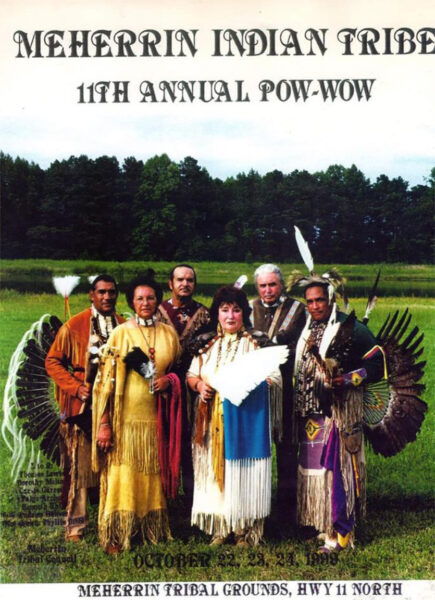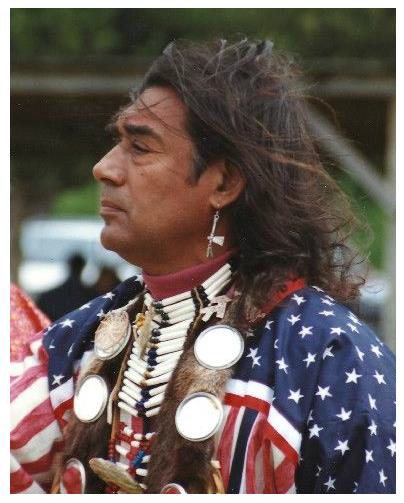1900
The Meherrin people attempted in vain to re-organize in the early 1900’s, events of the time (prejudices, factions in the community, governmental interferences, etc.,) prevented the tribe from openly acknowledging it’s continued existence and Indian heritage.
1904

Sarah (Sallie) Matilda Smith-Weaver-Lewis, historic matriarch to many Meherrin Tribal members passed away on April 17, 1904, she is buried alongside her Husband Elvey D. Lewis in Union, Hertford County, North Carolina.
1908
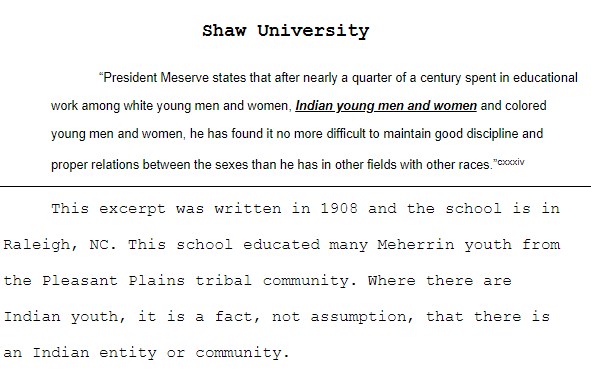
1913
Pleasant Plains Indian School
Class Photo 1913

1920
A new Pleasant Plains Indian School was built in 1920 to replace original school that was built in 1866. This new school was the second Rosenwald-funded school built in Hertford County.
National Register of Historic Places Registration Form
1920
Within Ahoskie Swamp (also in Hertford County), for instance, there remained as late as 1920 a bare circle, about a hundred feet across, known as Witches’ Dancing Grounds. Indian sorcerers’ pounding feet had kept vegetation away, and the effect lasted long after the natives’ demise. Not far away, near St. John’s, is a site remembered for a Meherrin Indian woman who was burned at the stake there for witch craft.
Poquosin: A Study of Rural Landscape and Society. By Jack Temple Kirby. page 173
1938
The Robert L. Vann’s school was built in Ahoskie, Hertford County, N.C. in 1938.
Robert Lee Vann whom the school was named after was born in Ahoskie on Aug 27, 1879. He
attended Waters Training School in Winton, graduating as valedictorian. In 1903, he received a
scholarship to Western University of Pennsylvania where he completed college and law school,
he would go onto become a prominent civil rights advocate, newspaper publisher and editor of
the Pittsburgh Courier, the nation’s largest Negro weekly newspaper with a circulation of
250,000. In 1933 Franklin Roosevelt appointed him Assistant to the Attorney General, a position
he held until January 1936. He died of cancer at his home in Pittsburgh on Oct. 24, 1940.
His race was listed as Indian (Native American) in the 1920 US Census for Pennsylvania. Many
local children including those of the Meherrin have attended the school named after him.
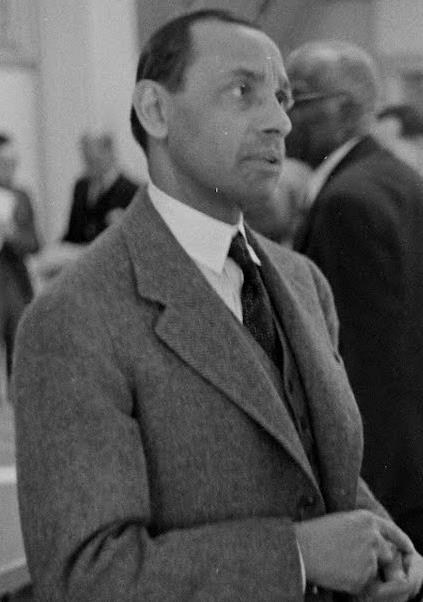
Robert L. Vann
1939
Pleasant Plains Indian School
Class Photo 1938-1939
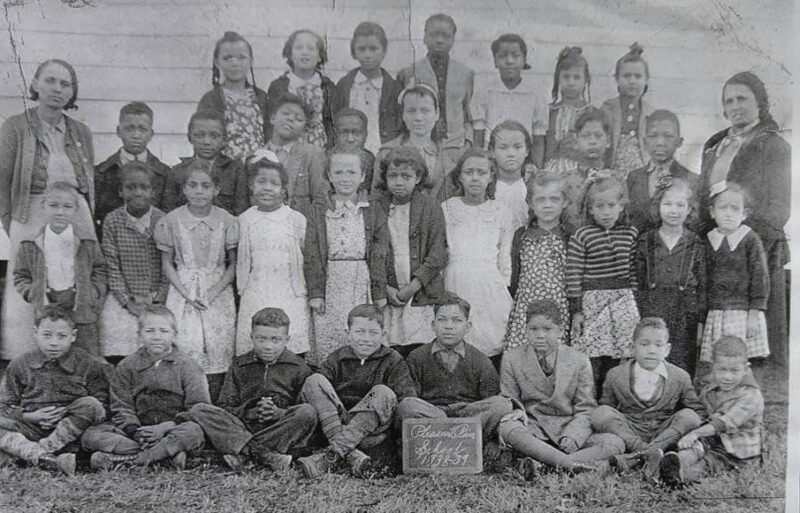
1941
Pleasant Plains Indian Church 1941.
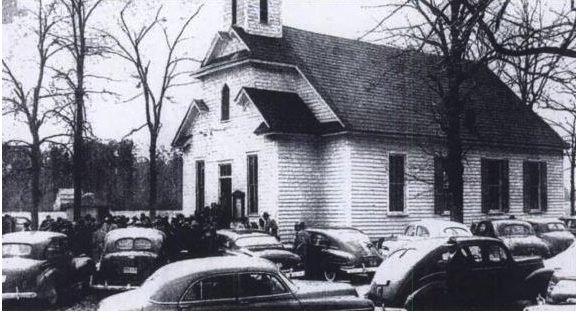
1941
The Pleasant Plains Indian Church burnt down in 1941, unfortunately with the loss of records, almost no written documentation exists for the beginning of the church.
National Register of Historic Places Registration Form.
1949
Construction of the new church began on April 4 1949.
Pleasant Plains Church 1851-2001 Booklet
1949
In 1949 the Pleasant Plains School closed down. The school was operated by the ancestors of present-day Meherrin Nation members. No slaves or descendants of slaves were permitted to attend for fear that they would learn to read and write. According to oral history, there was a “comb test” to determine eligibility, and there were a few white students, who were from Indian families, and were “Indian” or “Mulatto” on paper. This was an effort at self-determination- Indian families having a say in the education of their own children. The Pleasant Plains Indian School is not to be confused with the C.S. Brown School. In attendance were members of the Bizzell, Boon, Brown, Collins, Flood, Hall, Hunter, Lewis, Manley, Reid, Reynolds, and Weaver families, etc; ancestors of enrolled Meherrin Tribal members. The Pleasant Plains School operated for a number of years across the street from the Pleasant Plains Church.
The Pleasant Plains Indian School is registered as a National Historic Place with the United States Department of Interior – Nation Park Service for its local educational importance as the only graded public school that served both local African American and Native American students in the Pleasant Plains community of Winton, North Carolina from 1920 to 1949.
1950
In 1950 the Hertford County Board of Education had closed the school. The building was returned to Pleasant Plains Baptist Church for one dollar.
National Register of Historic Places Registration Form.
1950

1950
The Pleasant Plains Indian School was converted to a community center to serve Indian and mixed families in 1950
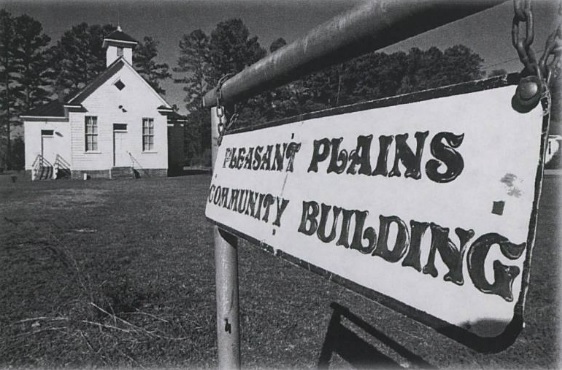
1951
Construction of The New Pleasant Plains Indian Church was completed in 1951 and final payment was made on Sunday April 4th 1951.
Pleasant Plains Church 1851-2001 Booklet
1951
Pleasant Plains Indian Church Building Committee members standing on the steps of the completed 1951 Church remodeling project. From left to right are A.H. Brett, E.M. Weaver, and H.S. Boon, chairman and Supervisor of the Building program (courtesy of Cordy Jordan).
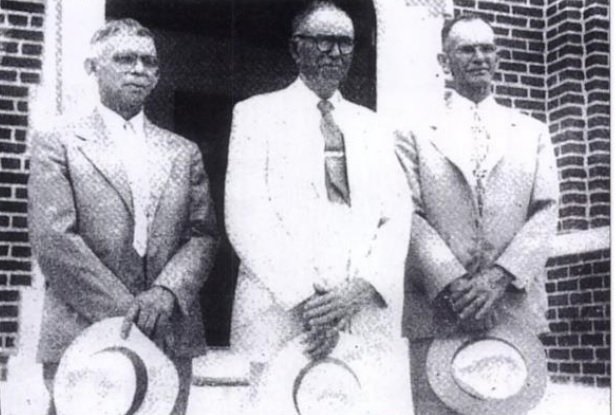
1951
Pleasant Plains Indian Church Sunday School 1951.

1951
In 1951, the church celebrated its one hundredth anniversary and prepared a “Historical Sketch of Pleasant Plains Baptist Church
National Register of Historic Places Registration Form.
1971
A Religious Observance – informant, Rev. R. R. Lewis, Winton, North Carolina 1971.
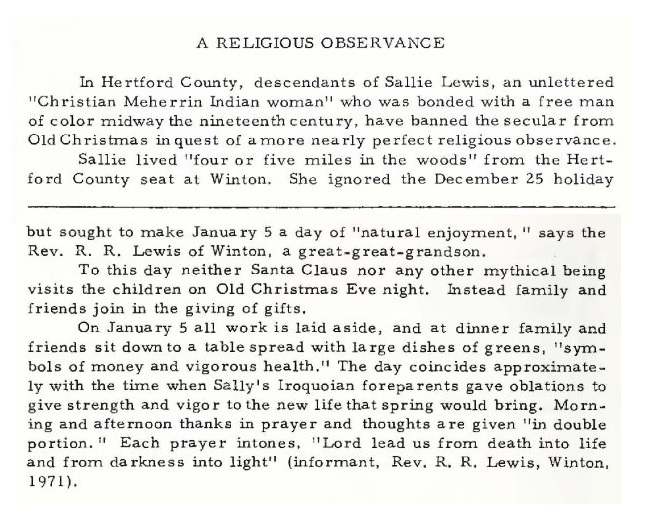
1975
In 1975 Pleasant Plains Community Center was home to the Pleasant Plains Senior Citizens Center with 31 Elders as members.

1975
In 1975, Meherrin descendants reorganized the tribe and reclaimed its identity under Chief Wayne Mackanear Brown. The People had continually maintained a degree of self-governance through Indian churches, schools, etc, but this was evidence that the harsh racial climate of the area had cooled for Meherrin people. Soon the Meherrins turned their energy toward electing tribal officials and planning for the future.
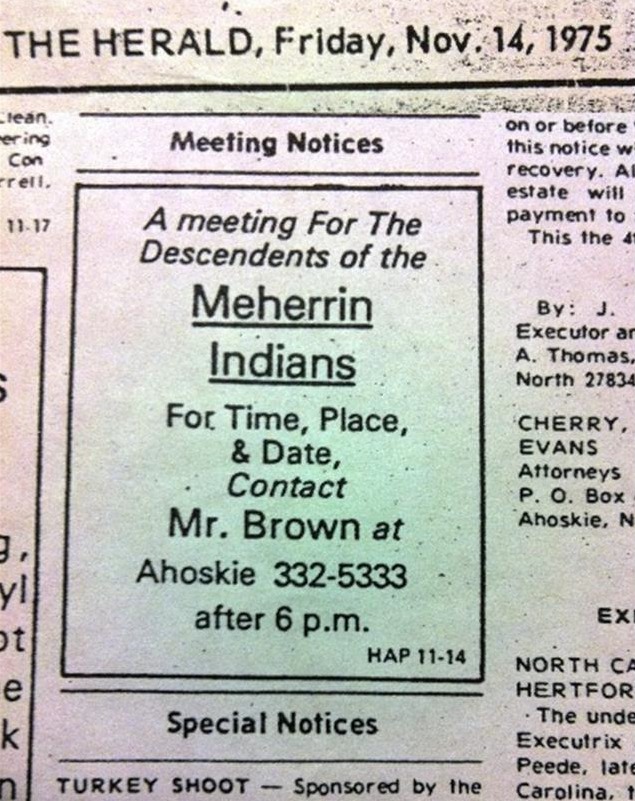
1977
The Meherrin Indian Tribe became chartered in 1977 after increasing activism by members.
1980

1982
Update on Health Status of American Indians In North Carolina – prepared for the North Carolina Commission of Indian Affairs.
August 1982
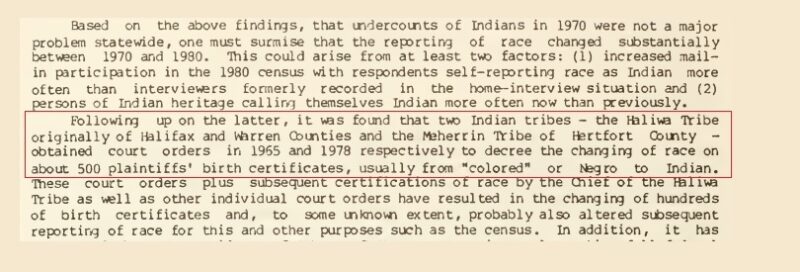
1984
Patrina Suarez was elected Princess of the Meherrin Tribe on May 4, 1984.

1984
In 1984 Reuben Lewis was elected to a four year term as Chief of the Meherrin Indian Tribe.

1986
On June 19th, 1986 the Meherrin Nation (Tribe) was recognized by the state of North Carolina as a State Recognized Tribe of Native Americans in North Carolina.
1986 North Carolina General Statute § 71A-7.1
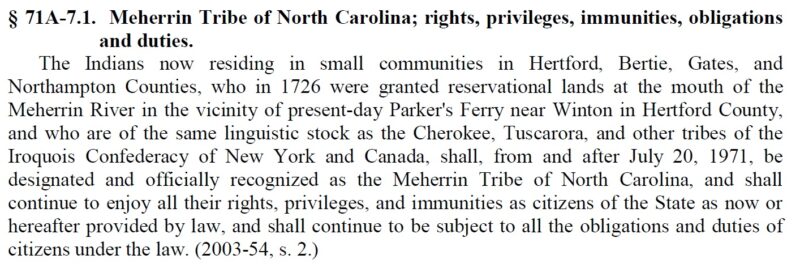
1987
April 25-26, 1987 – The Meherrin Indian Tribe of Hertford County attended the Murfreesboro Bicentennial Celebration where they reconstructed an authentic Indian longhouse and exhibited Indian artifacts.
1988
On July 8, 1988 The General Assembly of North Carolina read three times and enacted An Act To Establish The State Advisory Council On Indian Education.
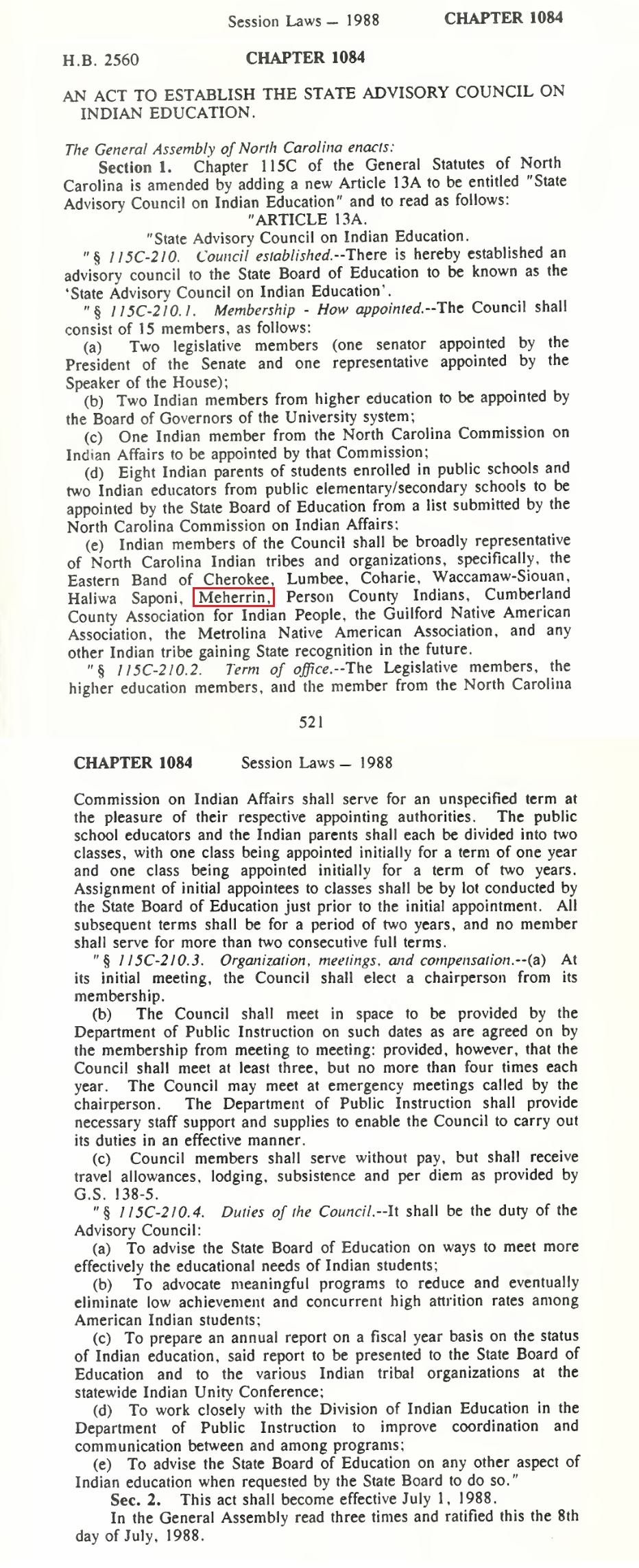
1988
In 1988 Patrick Riddick was elected to a four year term as Chief of the Meherrin Indian Tribe.
1989
March 28, 1989. Meherrin Tribal Chief Pat Riddick spoke to an audience on “The Effect of Legislation on Native American Groups” in a lecture and question-and-answer session as part of Native American Culture Week at Gardner Hall-University of North Carolina.
1989
Oct 27-28, 1989 Meherrin Indian Tribe held it’s first powwow.
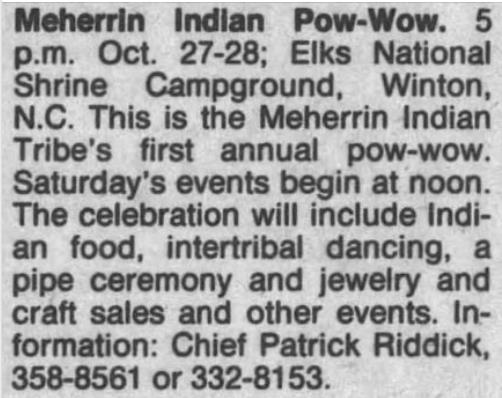
1991
On July 1, 1991 An Act was ratified that would add one member of the Meherrin Indian Tribe to the Commission On Indian Affairs.
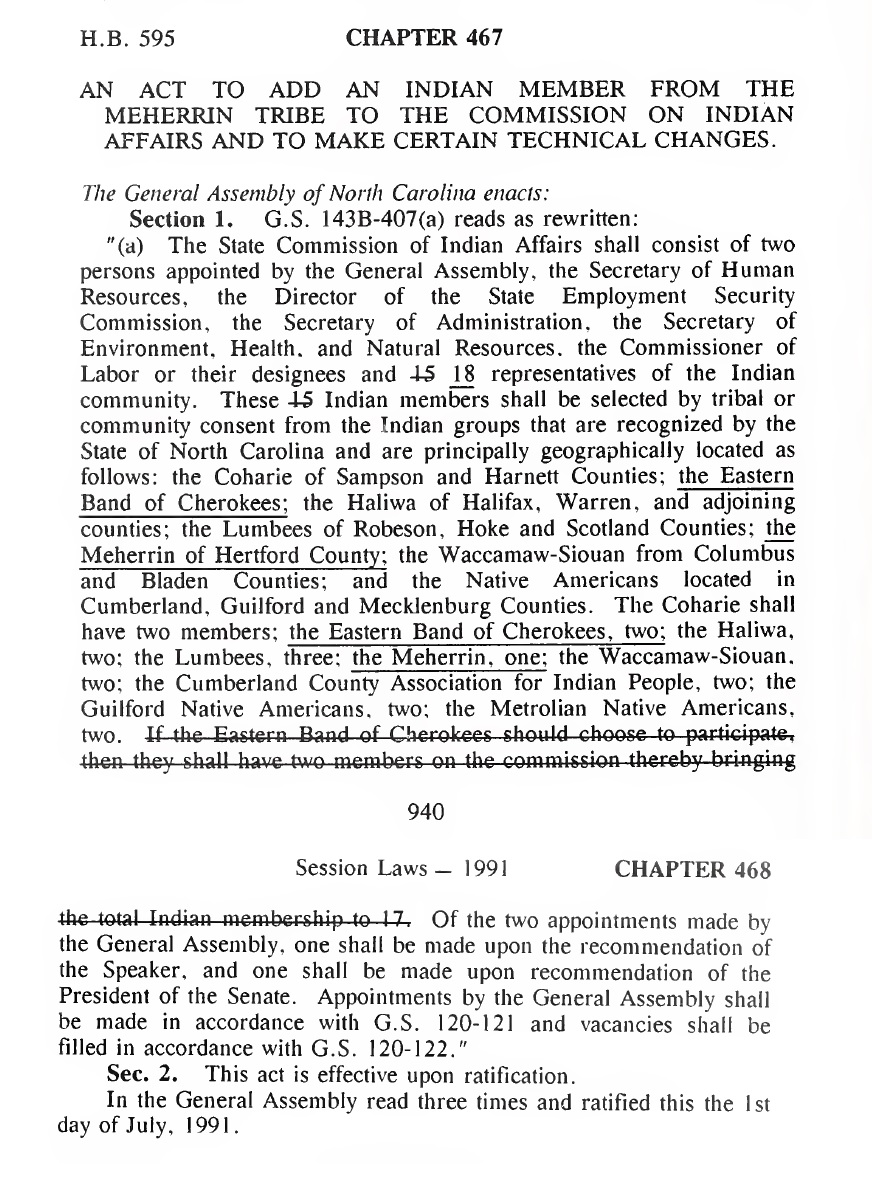
1991
3rd Annual Meherrin Powwow 1991
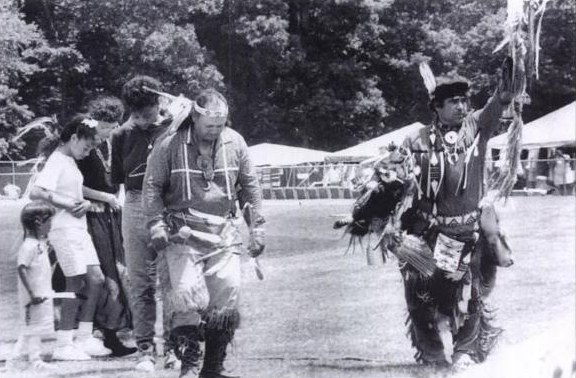
1992
4th Annual Meherrin Powwow 1992
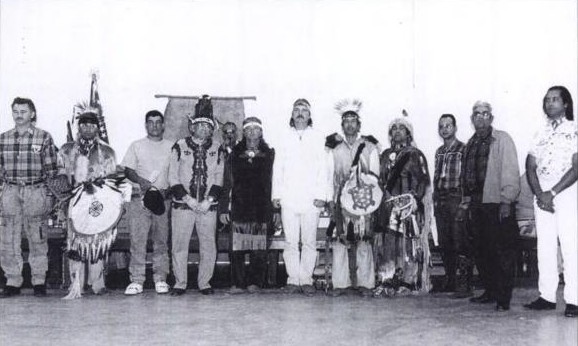
1992
In 1992 George Earl Pierce was elected to a four year term as Chief of the Meherrin Indian Tribe.
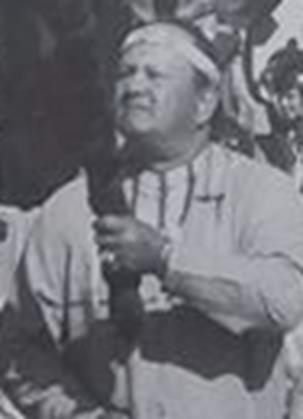
1993
May 20, 1993 – Page Archer of the Meherrin Indian Tribe speaks on Native culture and folklore at Achilles Elementary School.
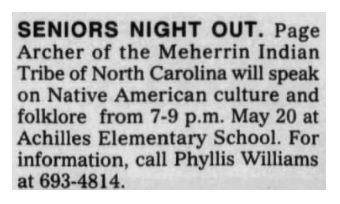
1993
April 3, 1993 – Merherrin Tribal member Paige Archer is featured in a new exhibit “Early American Indian Watermen” at the Waterman’s Museum in Yorkton, Virginia. Paige demonstrated early American Indian watermen crafts such as net weaving and making fish baskets, fish traps, fish hooks and tools for use in building log canoes.

1994
MEHERRIN RIVER OFFERS LOTS OF FISH AND BEAUTY
By Walter K. Taylor, special thanks to the News & Record
March 16, 1994
Meherrin Indians still fish in their namesake river. Earl Pierce is their chief; he proved that by catching three bass with his first three casts. Few men fish his swampy honeyhole beside the river, and I had earned the right the hard way.
We’d hiked for an hour through boot-sucking mud along the edge of Potecasi Creek – it was too overgrown for a canoe. Mosquitoes followed and waited for our sweat to wash off the bug spray that kept them at bay.Freshwater springs flowed to the banks and offered refreshment. Mussels crowded the creek bottom, food for raccoons and other creatures. We shook wild grapes from vines twining high into the trees, then sucked their sweet juices.
We crossed the creek on a massive cypress tree that had blown down to create a natural bridge. Finally, we reached an open stretch of creek bank and Pierce started filling his stringer. He uses a Zebco spinning outfit and a red rooster tail spinner effectively. He spoke of the old days when his people fished here with spears and bows.
Indians built fish traps from strips of wood to funnel the fish into small areas where they could be speared easily. Herring ran up the creek every spring, so thick, said Pierce, that a person could almost walk on them. Meherrin fishermen caught them with nets made of hemp fibers and preserved the fish by a drying and smoking process.
Pierce told of his lifetime roaming this land and the lives of his ancestors who fished and hunted here before him.
“It’s good to be home,’ said Pierce. “But watch where you walk, there’s just enough snakes around here to keep it interesting.”
Then he told of being struck on the ear by a cottonmouth in a bush on the first day of squirrel season years ago and how the encounter almost killed him. For years afterward, Pierce sought revenge and killed every snake he saw until a wise old shaman pointed out the folly of punishing all snakes just because one cottonmouth did him wrong. He reminded Pierce that the Creator put everything on Earth for a purpose, even snakes.
Pierce went back into the forest to fast and meditate about this snake situation when he encountered a huge diamondback rattlesnake, the largest – and many say the meanest – venomous reptile in North America.
He talked to the snake, he said, which stopped rattling and allowed Pierce to approach and dance around it. It didn’t strike.
Pierce said he made his peace with snakes that day and restored harmony to his soul. It allowed him to assume his rightful role as chief of the Meherrins. But he still keeps an eye out for snakes.
Less adventurous anglers that don’t care to hike through snake-infested swamps can drive a bass boat for several miles up Potecasi Creek from where it enters the Meherrin River, before the blackwater stream gets too narrow and jungly. Potecasi means “parting of the waters’ in the Indian tongue, and the mouth of the creek is within sight of where the Meherrin River meets the mighty Chowan. This was a Meherrin village site. Today it’s called Parker’s Ferry. An old- fashioned cable ferry crosses the river here, and there’s a boat ramp.
Scenery alone is reason enough to visit the Meherrin. Tall cypress trees line the shore where otters play and blue herons prowl. This classic East Carolina blackwater river is loaded with fish.
Robert Grimes Jr. from Gates County, lives to catch largemouth bass in this scenic river.
“It’s very enjoyable, especially during the early morning”, he said. “I fish around the lily pads and the downed trees with plastic worms and a homemade lure called a poppy, made from feathers. Caught a 7 pounder, heard of 8 pounders. But I’ve never caught a bass under three pounds since I have been fishing in the Meherrin.”
Marshall Askew is the mayor of Winton and an enthusiastic bass angler. He runs the rivers and creeks with his 19-foot Stratos bass boat when he’s not running the town.
“The Meherrin River is super bass fishing if you know where to go, and Potecasi Creek is one of the best places,” he said.
Mayor Askew owns a sportsman’s lodge in Winton and a tackle shop in nearby Tunis. He invites anglers to call him at home, 919-358-7791, or to call the tackle shop, 919-358-BAIT for current fishing information and tournament schedules.
The Meherrin River in northwestern North Carolina offers lots of fish and beautiful surroundings. What more could an angler ask from a river?
1994
Governor James B. Hunt Jr proclaims November as Indian Heritage Month in North Carolina. The kick-off event will be Saturday near Murfreesboro during the Meherrin Indian Powwow.
Source: Asheville Citizen-Times (Asheville, North Carolina)
Oct 18, 1994 Tuesday.
1995
7th Annual Meherrin Powwow
1995
Meherrin Town – Highway Marker Ceremony 1995

1996
In 1996 Thomas Lewis was elected to a four year term as Chief of the Meherrin Indian Tribe.
1999
11th Annual Meherrin Powwow – Oct 22-24, 1999